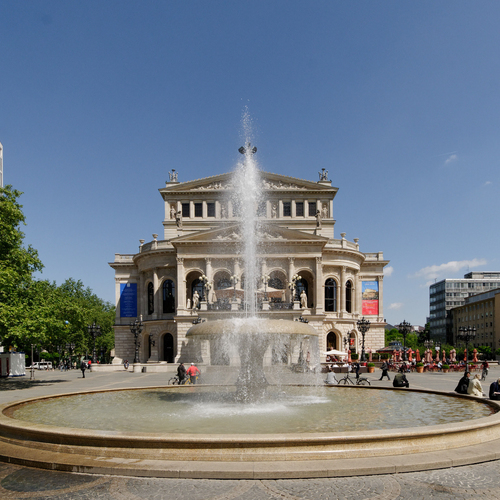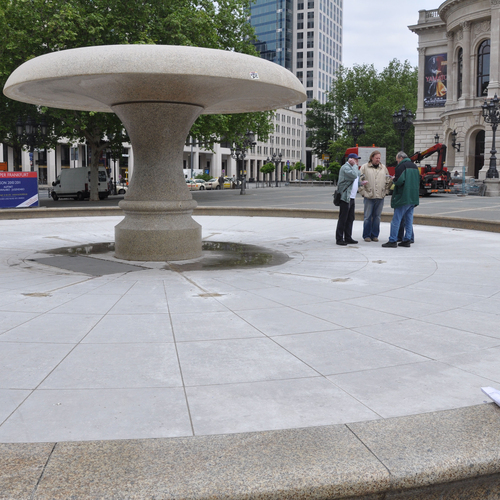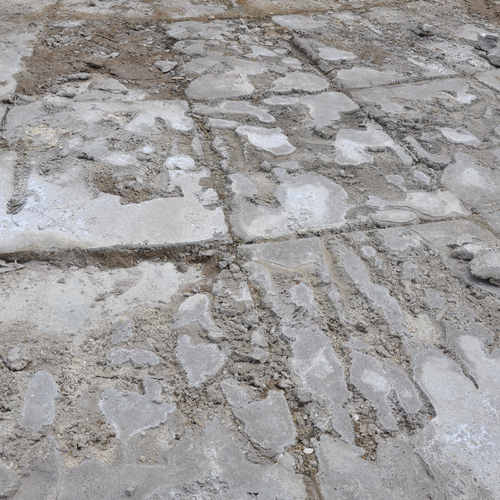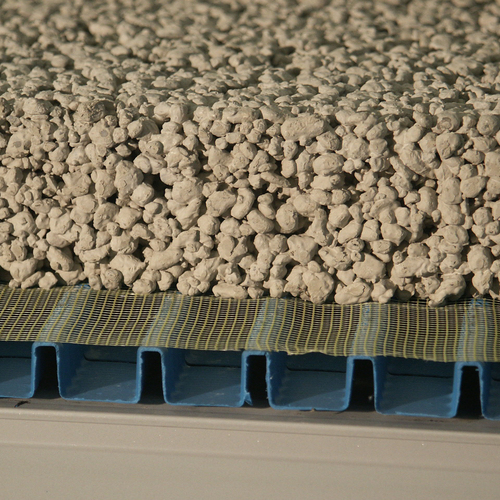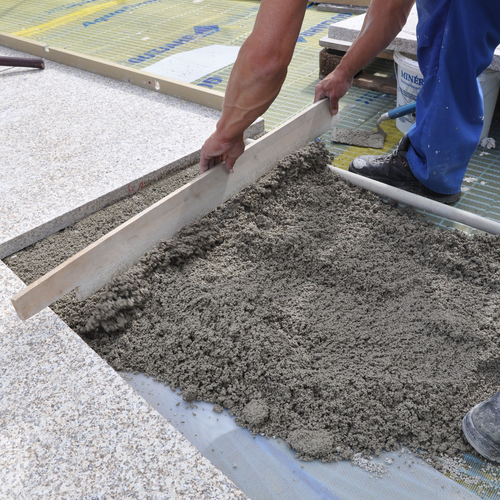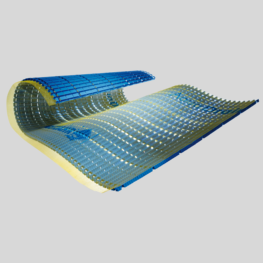Keeping it good and beautiful: Drainage system protects the well in front of the Old Opera from frost damage – permanently
Surrounded by magnificent historical buildings and a backdrop of modern skyscrapers: since the reopening of the Old Opera 35 years ago, on 18th August 1981, the opera square is a popular meeting point in Frankfurt city. In the centre of the scene is the Lucae well, a fountain complex designed to old plans. But just a few years after its opening ceremony, the fountain was leaking. In the spring of 2010, it was renovated from the ground up. Gutjahr’s AquaDrain EK surface drainage found an unusual purpose: it supports the drainage of water before the winter break and protects from frost damage in the long term. Visitors will be impressed by seeing that it still functions perfectly years after installation.
Dangling your feet in the beautiful pool, running your hand over the granite warmed by the sun: That which initially made the Lucae fountain so appealing was soon no more. Whitish-grey deposits had covered the bottom of the well like a veil, and the original colour of the stone was hardly recognizable. The well was also losing water faster than it could be added: An unmissable trickle ran across the Opera Square. This could only be stopped by a complete renovation all the way down to the substrate, a general overhaul of the technology and the appearance was urgently required.
Retaining the floor covering
The mushroom-shaped spring fountain system containing 120 tons of noble yellow Reinersreuth granite consists of a round pool with a bowl supported by a column in the middle. It was already clear during the first site visit with the City of Frankfurt building department and stonemason E. Hennrich that the base of the fountain consisting of 4 to 5 cm thick granite slabs was to be retained. Since the laying mortar had been damaged by frost, the plan was to install a draining substrate: in future, the water stored in the mortar should be able to run out via the anti-capillary drainage when the fountain is emptied before the winter break. All of the water that is unavoidably accumulated during operation is therefore drained, so that no frost damage can occur in winter.
Drains faster
The water drainage capability improves up to 150 times with the capillary passive drainage mat beneath the drainage mortar – even when used in a fountain.
A special challenge
Before the actual renovation could start, the fountain has to be dismantled piece by piece. When this took place, the heavy granite slabs were carefully disassembled and numbered, then the residual mortar was removed and the surface of the slabs was ground and polished. The pool of the fountain was to be re-engineered at the same time: To do this, the sloping concrete base was ground off completely and the foundation curbs to the edges were re-concreted. Unlike before, the concrete ring was given a reinforced connection to the substrate. Then the substrates of the pool including the technical shaft were sealed with several layers of a mineral sealing slurry.
A Gutjahr drainage mat was then laid onto the waterproofing to carry out a rather unusual task: because AquaDrain EK was actually specially developed for the laying of natural stone onto drainage mortar. In this special case it ensures that when the fountain is shut down in the winter, all water is removed from the mortar layer, which effectively avoids frost damage and efflorescence.
How AquaDrain EK works: The system is capillary passive, and supports the entire covering. Because of this, the drainage channels form a large cavity, and water can drain away more quickly and effectively. At the same time, backwater on the waterproofing no longer flows back into the covering structure, which avoids damage. Because of the back ventilation the covering also dries more quickly. Another special feature of this innovative system is the mesh, which remains permanently water-permeable, meaning that it does not clog because of the soluble lime in the drainage mortar. Gutjahr gives specialist companies a six-year guarantee on the system.
Lovely handicraft
The Lucae fountain is once again the focal point of many events on the Opera Square in Frankfurt, and has been shining in new splendour for more than five years. The excellent work of the stonemasons is plain for all to see. Underneath this, and concealed from the observer, everything has been done to counteract damage caused by frost and water – and is also still working after many years, you are onto a sure thing with Gutjahr. Because the goal was precisely this: retaining the long-term attractiveness and functionality of the fountain. Thanks to the bigger pores of the installation mortar and the 16 mm high additional drainage layer, the backwater can be drained completely before the winter break. this means that walkers can look forward to a refreshing foot spa in future summers as well. "Dem Wahren Schönen Guten" (to the True, the Good and the Beautiful): the inscription on the cornice of the Old Opera may now quite rightly also apply to the restored Lucae fountain.
About the Lucae fountain
Like Frankfurt Opera House, or the Old Opera as it is now known, the fountain was designed by Berlin architect Richard Lucae in 1872. However, the fountain system was first realised in a slightly modified form by sculptor Edwin Hüller. The spring fountain system consisting of 120 tonnes of Reinersreuth granite consists of a round pool with a diameter of 17 metres and a bowl supported by a column for the water fountain. The fountain was renovated from scratch in 2010.
Products used
Similar project reports
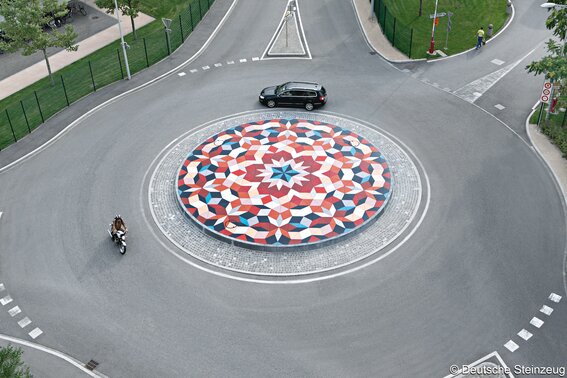
roundabout in front of the Novartis factory, Basel, Switzerland
Creation of a tile mandala
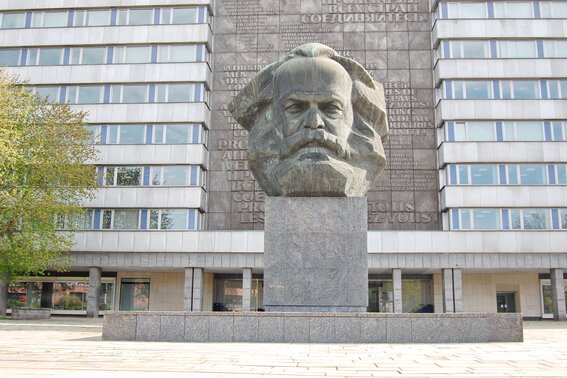
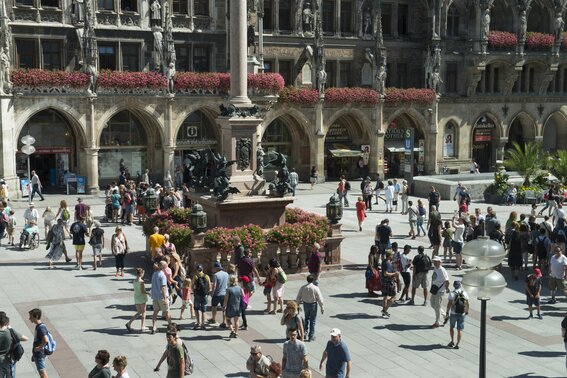
![[TRL] Gutjahr Systemtechnik GmbH - Komplettsysteme für den Außen- und Innenbereich](/build/images/gutjahr-logo.d62773db.svg)

